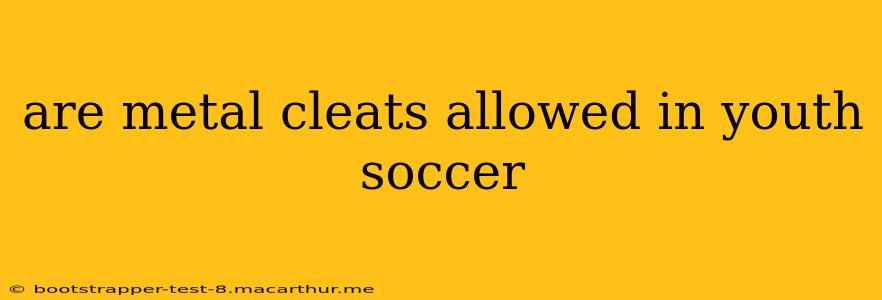The question of whether metal cleats are allowed in youth soccer is a common one, often causing confusion among parents and coaches. The short answer is: it depends. The allowance of metal cleats varies significantly depending on the league, the age group, and sometimes even the specific field conditions. There's no universal rule.
This guide will delve into the specifics, helping you navigate the rules and regulations surrounding cleat types in youth soccer.
Why the Variation in Rules Regarding Metal Cleats?
The differing opinions on metal cleats stem from a combination of safety concerns and playing surface considerations.
-
Safety: Metal cleats, particularly those with longer studs, pose a higher risk of injury to both the player wearing them and their opponents. A slip or a sudden change in direction can lead to dangerous studs contacting an opponent's leg or foot.
-
Playing Surface: The condition of the field plays a role. Hard, dry surfaces might be less forgiving with metal cleats, increasing the risk of injury. Softer surfaces, conversely, might mitigate some of this risk.
-
Age and Development: Younger players often lack the coordination and balance needed to safely use metal cleats. The risk of injury is significantly higher in these age groups.
What Do Different Leagues Say About Metal Cleats?
The best way to know whether metal cleats are permitted is to check the specific rules of your child's soccer league or organization. Their rules and regulations will supersede any generalized advice. Look for this information in:
- League Handbooks: These are often available online or at the league's registration meetings.
- League Websites: Many leagues post their rules clearly online.
- League Officials: Contact a league administrator or coach if you can't find the information online.
What Types of Cleats Are Generally Allowed in Youth Soccer?
While metal cleats might be restricted, several alternatives offer excellent traction and support without the increased injury risk:
-
Firm Ground (FG) Cleats: These are designed for firm, dry natural grass surfaces and typically have shorter, plastic or molded studs. These are generally the safest and most widely accepted option.
-
Soft Ground (SG) Cleats: These cleats, designed for soft, wet ground, typically use longer studs made of plastic or rubber. Some leagues might allow these, but it's crucial to check the specific rules.
-
Multi-Ground (MG) Cleats: These are versatile and suitable for a range of surfaces, offering a good balance between traction and safety. They are a popular choice for youth soccer.
-
Artificial Grass (AG) Cleats: Specifically designed for artificial turf surfaces, these usually feature shorter, rubber studs. Check with your league if your field is artificial turf.
Are Metal Cleats Ever Allowed?
While less common, some older youth leagues or those with very specific field conditions might allow metal cleats, particularly for older players. However, this is rare, and always requires confirmation with the league's rules.
What Happens if My Child Wears Metal Cleats When They Aren't Allowed?
Wearing prohibited cleats could lead to:
- Game disqualification: Your child might be asked to change cleats before participating in the game.
- League sanctions: The league may impose fines or other penalties on the player or their parents.
In Conclusion: Always Check Your League's Rules
The overarching message is clear: always check the specific rules of your child's soccer league regarding cleat types before purchasing any cleats. Prioritizing safety and adhering to league regulations ensures a positive and injury-free experience for all players. Don't rely on general assumptions; consult the official sources to avoid any potential problems.
